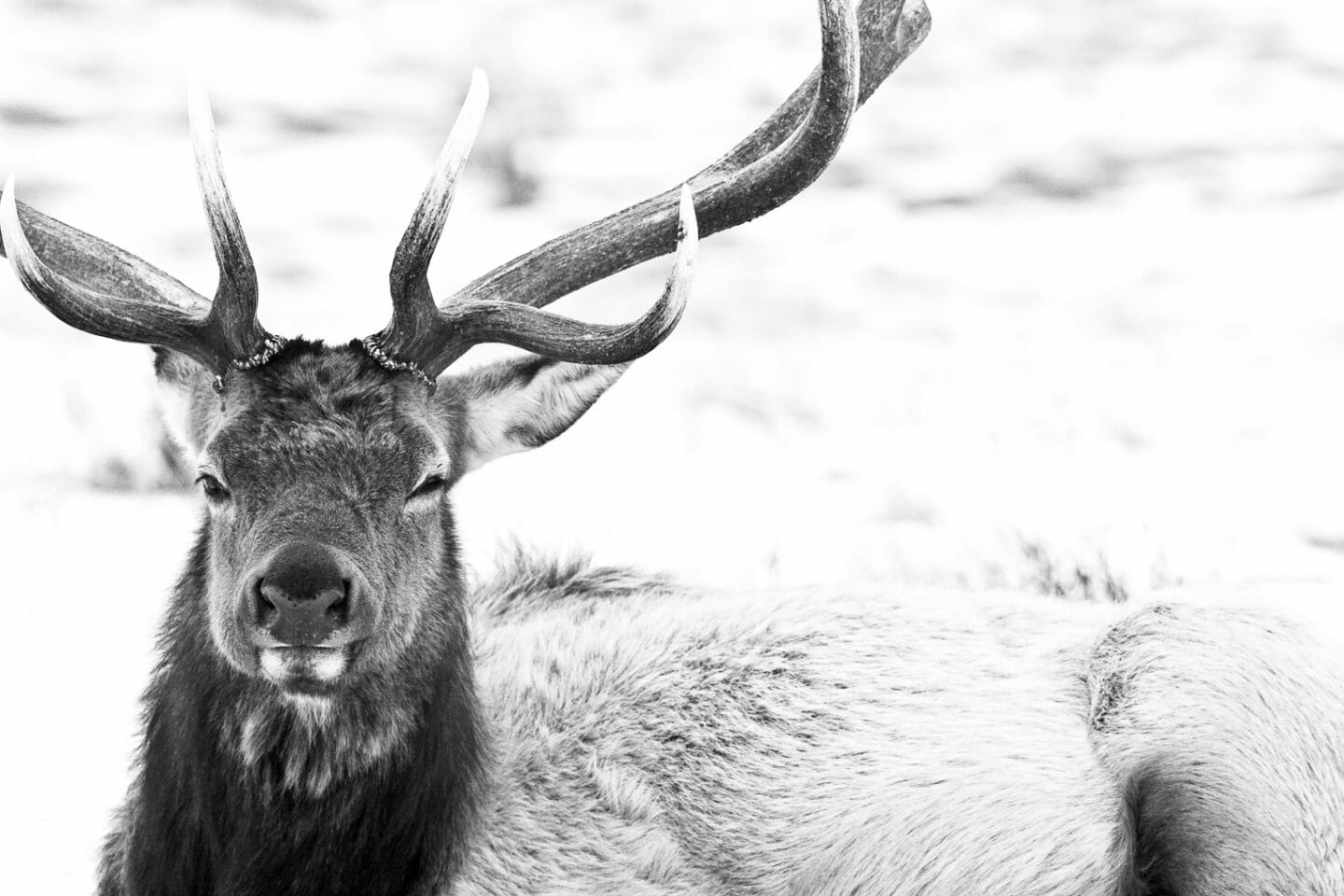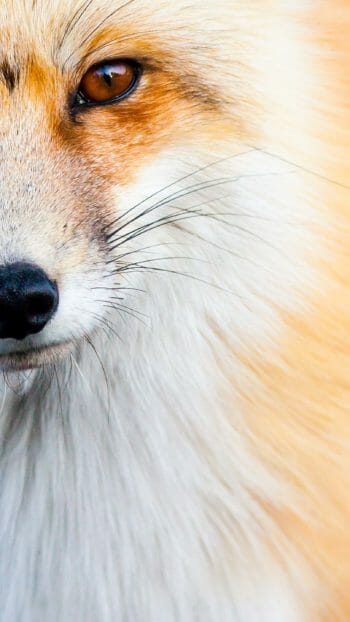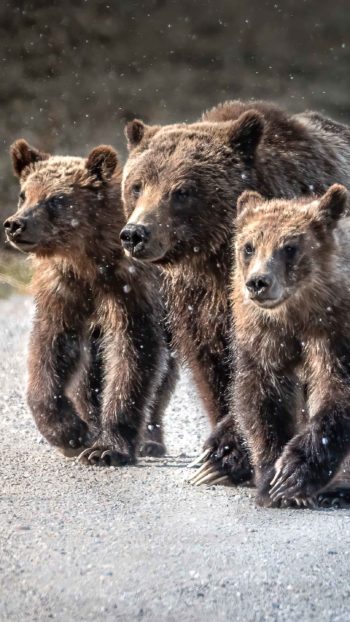To the Elk with the Palmated Antlers … a love letter.
pal·mate | \ ˈpal-ˌmāt , ˈpä-, ˈpäl-, ˈpȯ-, ˈpȯl- \
palmate adjective
He is standing, facing away from us, head down and eating. He moves very little, not having to paw at the foot-deep snow with his hooves like the others. He has been fortunate to find a melted circle of earth where a clump of matted dark-yellow grass is available to him. He is working his way through it with his ivory teeth, gripping and cutting as low to the ground as he can muster, where the best nutrition hides in paper-tight cellulose for the winter. We watch him from a horse-drawn sleigh, and though he is 50 yards away, he seems almost as large as the two dark percherons leading us. They are breathing hard from their work, and the clouds of steam pushing forth freeze instantly on their bits. It is zero degrees outside.
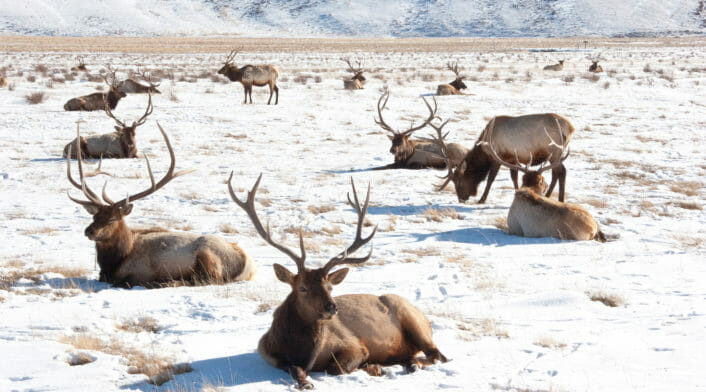
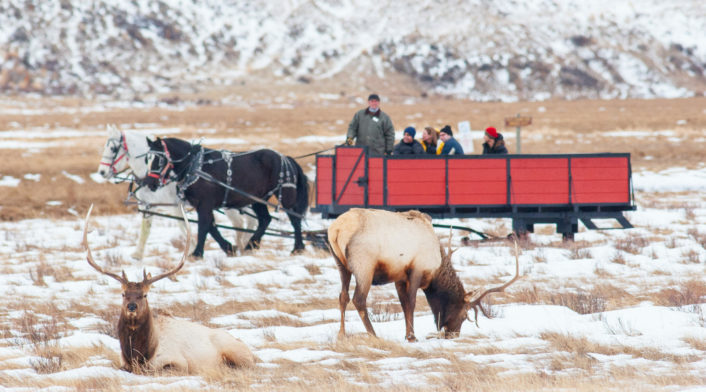
We come to a stop, and we are all fixated on this elk now. Slowly he raises his head to force a mouthful of grass into this throat, and we can see what truly stands him apart from his herd. His two massive antlers rise up and away from his head four feet in either direction like a baroque chandelier, chestnut brown with several sections of wide, splayed bone between several of his top tines. It appears as if his main antler trunk was stretched, when it was soft and malleable last summer, and pulled like clay into two completely novel shapes. He looks like an artist’s rendition of an elk pulled from a hallucinatory dream, or perhaps even a child’s imagination. His atypical antlers conjure words like “battle-axe” “viking” “moose-paddle” and “deformed” from voices around the wagon.
We collectively wonder at his uniqueness. The sleigh driver laughs and says in true Wyoming form, “Never seen a some’bitch like him before!” The reverie of the moment is broken for some, who laugh with him, but not for me. I have never seen a some’bitch like him either.
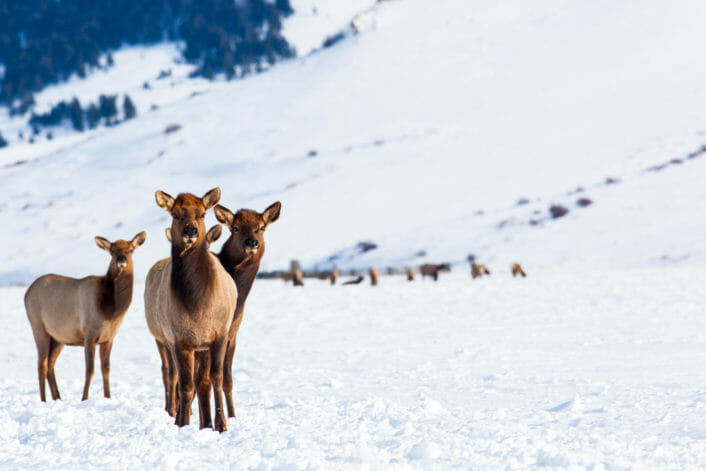
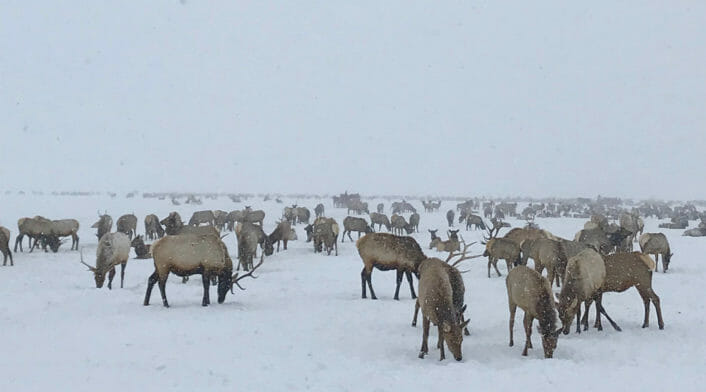
Rocky Mountain Elk (cervus elaphus canadensis) are one of the most fascinating and plentiful wild animals in Western North America. They are closely related to European and Asian Red Deer, which are their ancestors, yet have adapted themselves through 8,000 or so years to our extremely diverse basin and range landscape. The massive herd of 6-10,000 who we see in the National Elk Refuge every winter near our town of Jackson, WY is actually comprised of many herds. “Small clans” if you will, that seem to coagulate into one “tribe” for the winter. They allow themselves to share space, to take advantage where they can for survival. They seek grand fields with forbs, herbs and grasses to feed on, creeks or springs from which to drink, and sunshine to melt the burdensome snow.
Here in our backyard they master patience through relentless winter storms that can drop several feet in a matter of days, gusting winds dropping temperatures to well below zero, and the very natural and persistent threat of their matched predator; the wolf. They move with an elegance and grace that commands respect, and consequently, the National Elk Refuge came into form in order to protect their right to existence. It is a long story, but in short, sharing this Valley with the elk has become as much a part of our heritage as theirs.
And honestly, we sometimes come to expect what we will see, what will play out before us. But sometimes, our knowledge and experience are beautifully turned on their head, when we get to witness something new. This is the true wild experience, to expect something known, and suddenly, unexplainably, encounter something new.
Guides in the Greater Yellowstone Ecosystem are fortunate. We are able to witness some of the best wildlife in the world, and our most bountiful single species is the elk. We become, through our time and efforts, intimately acquainted with them in all their seasons of life. We cherish the moments we are lucky enough to watch them, in their world, seemingly oblivious to our presence (though we know better). We watch their birthing in May, little calves spotted like deer fawns. We relish together in the sweet bounty of summer and measure the males’ antlers growth daily in their velvet skin. We watch their rut in the fall where competition (and testosterone) are at the apex of energy, and then after, the descent into the long slow winter which tests us all. We search for their signs in forests and in sage. We count tines on the male’s antlers and guess at their ages, and their health. We smell the loamy earth torn by their hooves pushing hard against it, and listen to their bugling from miles away, a sound which will haunt your mind’s eye with a symphonic vision of wildness. We study their tracks, their migrations, their voices.
Our guiding begins and grows here, with deep, intentional witnessing. This is what we endeavor to share with our guests. A personal, truthful connection with our wildlife. And honestly, we sometimes come to expect what we will see, what will play out before us. But sometimes, our knowledge and experience are beautifully turned on their head, when we get to witness something new. This is the true wild experience, to expect something known, and suddenly, unexplainably, encounter something new.
This is how it was with the bull with the palmated antlers. He appeared this winter of 2020 and was immediately differentiated from the rest. He kept to himself, not uncommon amongst males, but in winter we expect them to find compatibility with their brethren. They are vulnerable from exhaustion. He instead chose to sleep and feed alone, or on the periphery of large herds of cows. He moved slowly and without urgency. He fed often and rested much. He stayed fairly close to the creek for more than a month during hard snowy days. His antlers, those bones that grow for 120 days a year, every year of their life, were among the most unique ever seen here. They demanded attention, curiosity, contemplation. He, though normal in every other way, was set apart by the one physical feature that males depend on for success; the antler.
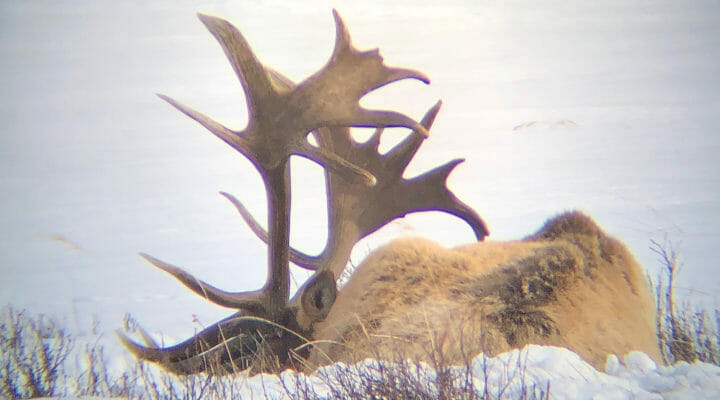
We, the community, marveled at him through Christmas, New Year’s, and one day before Valentine’s Day, when this fascinating creature met his demise from an affliction yet to be determined. His remains were collected from the cold grassy field where he succumbed and will be analyzed for science. The refuge biologist mused, “I have never seen his like before, nor may ever again. His legacy is special”. These are few, yet powerful words that we can all understand. We may never see the likes of him again, but hopefully, we will remain open to the possibility. This is what we hope to inspire every day in our guests, as well as fellow naturalists. We are thankful to him for reminding us.

